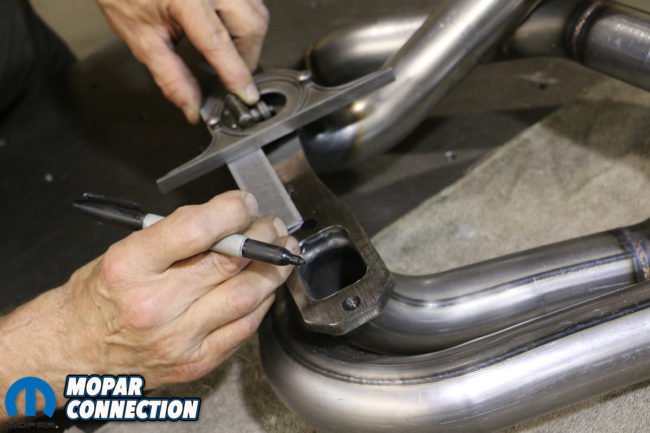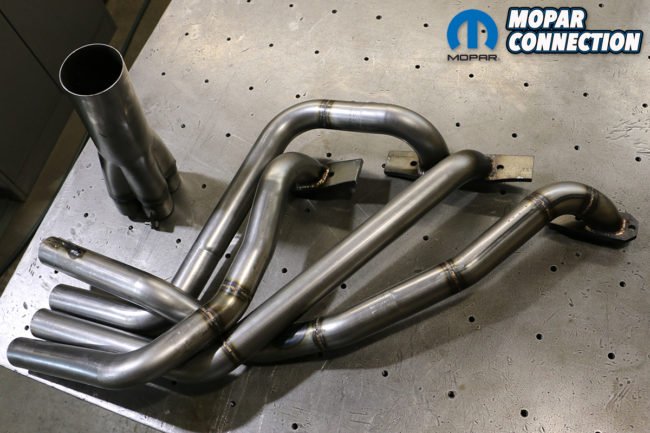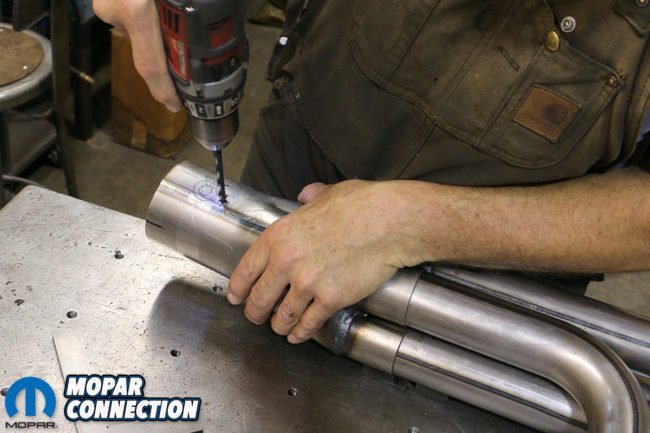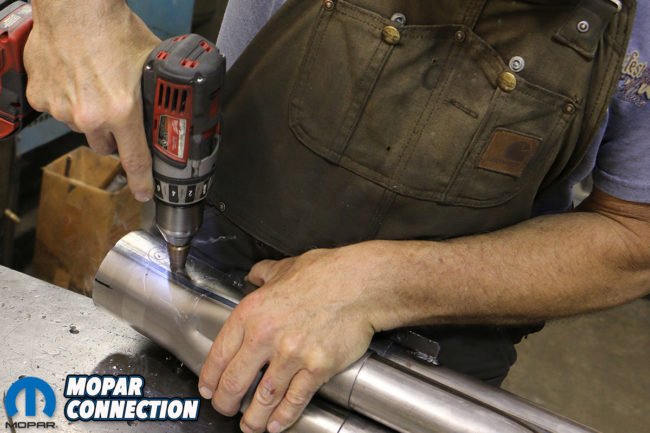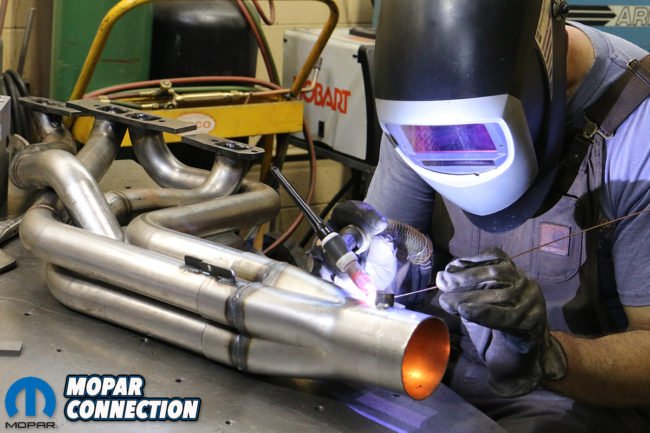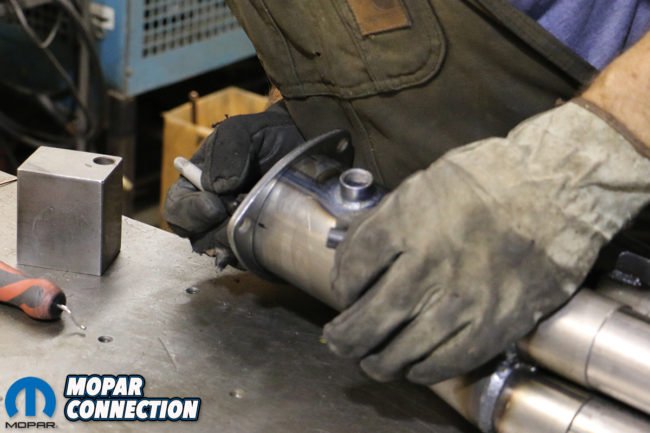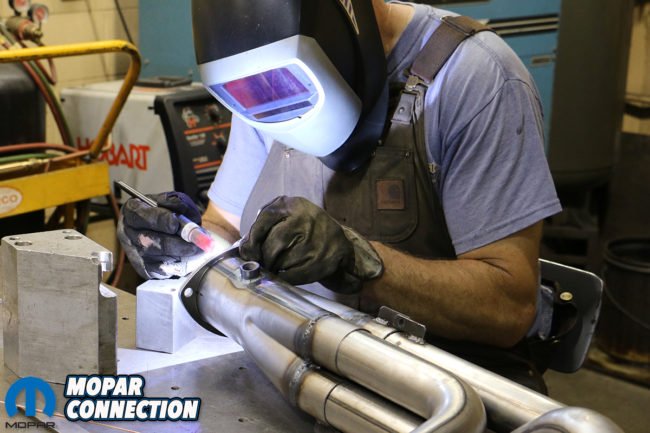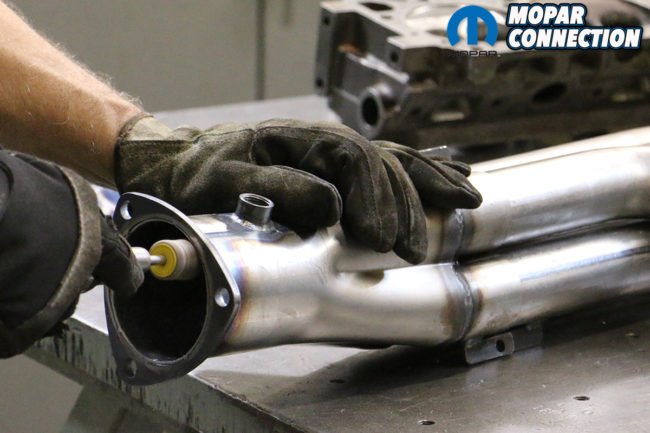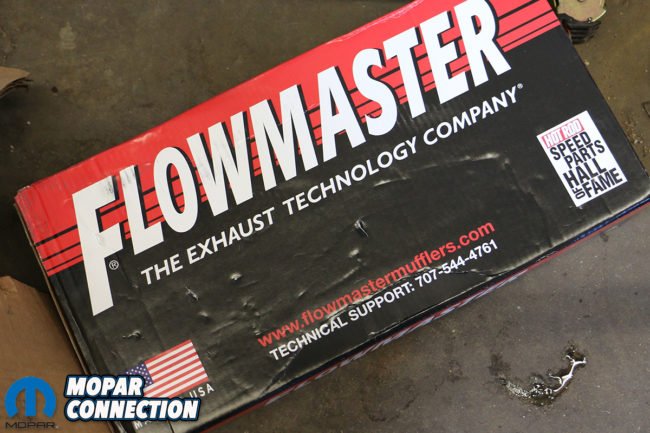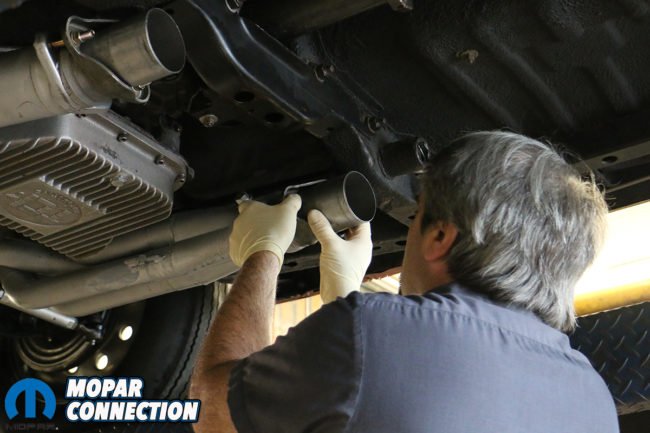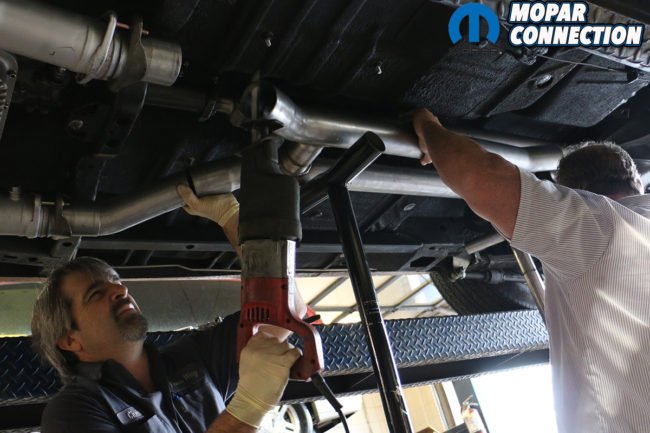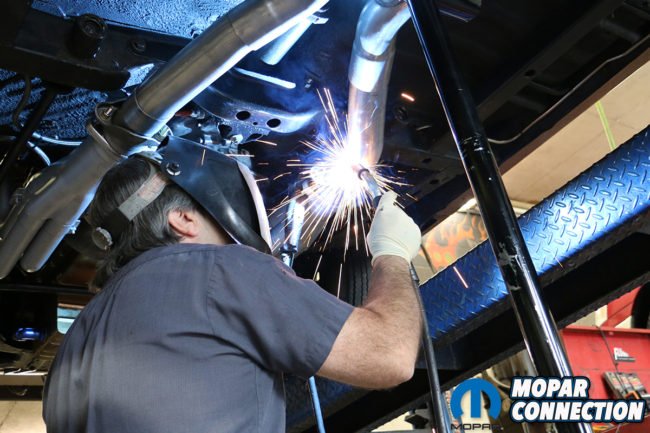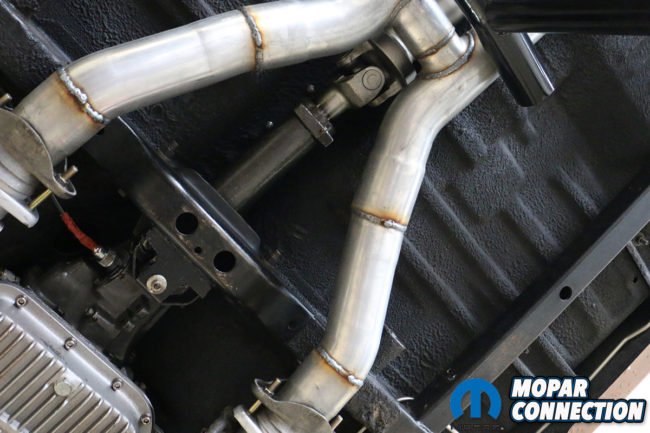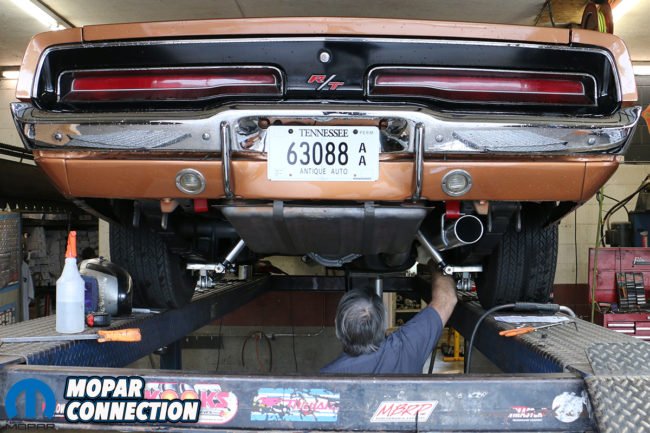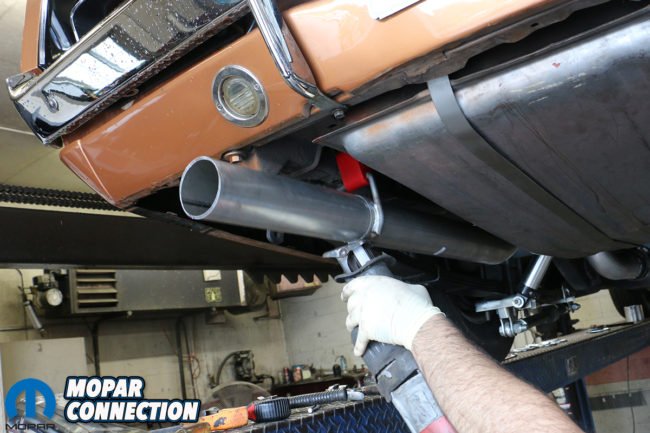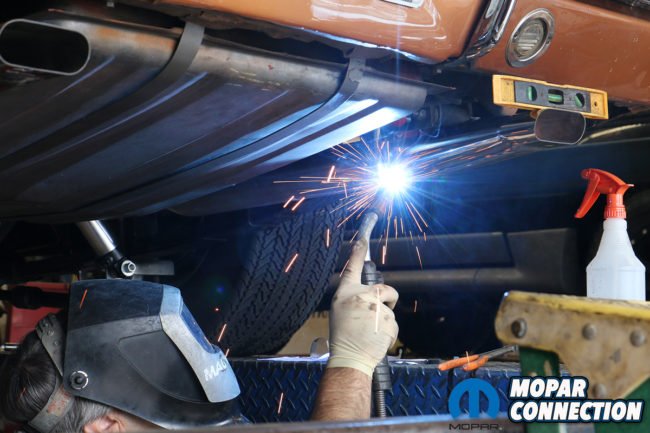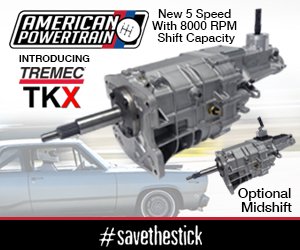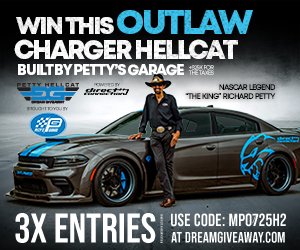
Engines are just big air pumps. Sure, it might be cliché to say so, but it does not negate that the more air (and fuel) you can move in and out of the engine, the more power it produces. So when it came to our big 535-cubic-inch “Wicked Wedge of The South” we knew we were going to need to make some adjustments if we were going to witness any performance and efficiency gains over its original total of 624-horsepower and 700 lbs. ft. of torque first made on the dyno last year.
Previously, we improved the engine’s internal atmosphere issues (ie. blowby) by sealing up the big block with new fabricated aluminum valve covers from Hamburger’s Performance and a GZ Motorsports Sportsman Complete Racing Vacuum Pump Kit. Likewise, we also installed the latest FAST (Fuel Air Spark Technology) EZ-EFI 2.0 fuel injection to not only improve our wedge’s fuel delivery and throttle response, but benefit from the EZ-EFI 2.0’s massive 1,200cfm throttle body (a full 350cfm more than our outgoing four-barrel carburetor) – but more on that at a later date.
Top left: To better fit with our aftermarket aluminum heads, we opted to follow Husler’s suggestion and section the exhaust flange. Top right: Best to measure twice and cut once. Bottom left: Mopar Connection Technical Advisor Tray Batey stepped in to help make our headers jive with our other aftermarket parts. Bottom right: With our headers’ equal-length tubes separated, we’ll be able to reassemble them inside the Charger.
Above: Batey trimmed our massive collector’s overall length to equal distances from the cross member to better accommodate our Flowmaster exhaust system.
Between finishing up our vacuum pump installation and modernizing our RB block Mopar with digital EFI, we had to dramatically improve how our engine evacuated its spent gasses. Previously, we were running a pretty standard pair of ceramic coated Summit Racing headers (1 5/8-inch tube, 2½-inch collectors) that ran into a exhaust shop-bent pair of 2½-inch full-length exhaust. And as is common with most tube benders, we found several spots where our once 2½-inch tube crimped down to more like 1½-inch. Effectively, we were choking the life from our project car.
Working from the top down, we first contacted Marc Lewis at Hedman Performance Group. Although Hedman’s own catalog of branded “hedders” is extensive, Lewis insisted that for our big-inch stroker that we went with Hedman’s Husler Street & Strip Racing Hedders. With equal-length 2-inch tubes meeting at a slip-on 3½-inch collector, the Husler Hedders would free up the restricted flow pulsing out of our aluminum heads. Each of Husler Street & Strip Hedders are hand-built to order and come raw, leaving you to choose how to treat the uncoated mild steel; and with all Hedman Husler Hedders, they’re available with optional HTC (Silver), or Black Maxx (Black) ceramic-metallic coatings.
Top left & center: First a pilot hole and then a step drill was used to make the properly angled hole for the O2 sensors. It’s a standard rule that an O2 sensor should be up 10′ from horizontal. Top right: Batey uses a chamfering tool to allow for deeper welding penetration. Bottom left: The bung (supplied and available through Hedman Performance Group) is ready to be welded. Bottom center: Batey carefully TIG welds the bung to the collector. Bottom right: The final touch is running a tap through to make sure no flash sticks to the threads.
Above left: Batey marks where the sub-flange will be welded, including aligning the bolt holes so they don’t interfere with the floorboards. Above center: A clean bead unites the two. Above right: A quick pass of the scroll sander cleans things up.
Since we planned to weld in a pair of O2 bungs (one for our EFI and the other for the Hardcore Horsepower chassis dyno where we scheduled to do some extensive testing), we opted to leave the Hedders natural for the time being. Initial fitting of the Huslers unveiled a handful of speed bumps: first, we would need to remove the torsion bars to slip these into place; as per Husler’s suggestion, we also were going to need to segment the flange between the ports to install them (Husler cautions to not cut between twin ports); and Husler’s jig is based off of stock iron heads (in fact, you’ll find most all aftermarket parts are based off of stock setups). Our thick cast Edelbrock aluminum heads placed the exhaust flange nearly an inch out in either direction, blocking us from reinstalling the torsion bars.
To solve our issues, we turned back to our friend, fabricator extraordinaire and Mopar Connection Technical Advisor, Tray Batey who brought our Huslers over to Collins Machine & Tool Co. in Madison, Tennessee. There, Batey was able to cut the flange into three pieces, shorten our collectors to fit inside of the cross member, weld on the sub-flanges, drill and weld on our O2 bungs, and most importantly, helped us tweak the headers a full 1½-inches inward to clear the torsion bars. To do this, Batey bolted a stock iron 906 cast 440 head to a fabrication table, mounted the header to the cylinder head, heated the tubes cherry red and coerced them with a lever bar until they matched our measurements.
Above left: The last step in getting our Husler Hedders ready to fit was the most precarious. Because of our aftermarket heads’ extended exhaust runners, the tolerances of the headers were thrown out of whack. First, we mounted our headers to an iron head bolted to the table for a stable surface. Above right: Next, Batey heated the individual tubes and brought them inboard a full 1½-inches. You can also see how we needed to flatten the #2 tube to clear the factory shock tower. That’s hot rodding!
Above left: We took our Project Brazen to Four Way Muffler, in Gallatin, TN. You know you’re in the right place when there’s a ’70 Challenger T/A in the side bay being restored and a complete and date-coded ’67 426 Hemi tucked in the back room. Above center: We went with Flowmaster’s American Thunder Series 3-inch system specifically built for ’68-’70 Dodge and Plymouth B-bodies. Above right: Each kit comes with a pair of Super 40 Series mufflers.
If you expect aftermarket parts to play well with other brand’s aftermarket parts, you’re in for a long and frustrating life lesson. That being said, a torch, wood block and rubber mallet was all that was needed to slightly flatten the outside radius of our #2 tube to clear and we were we no longer contacting the passenger-side shock tower. One final round of test fitting after our last tweaks verified that our Huslers would clear, so we pulled them out yet again, scrubbed off the scaling and gave our customized Huslers a couple quick passes of high-temperature exhaust paint to stave off potential oxidation.
Happy with our work, we then sought to find the right way to plumb the rest of the exhaust. Because of the nature of most exhaust shop tube benders, we didn’t want to go that route again. Rather, we reached out to Dale Dotson at Flowmaster who recommended their American Thunder Series 3-inch tube system. Part of Flowmaster’s Delta Force exhaust kits, the American Thunder Series is a complete header-back, mandrel bent dual-exhaust system available in either 2½-inch or 3-inch aluminized steel purposely formed and cut to fit 1968-1970 B-body Mopars. Each kit includes an H-pipe for equalization, Super 40 Series mufflers, and all of the hangers, brackets and mounting hardware to make the installation as painless as possible.
Top left: The American Thunder Series is designed to attach to headers, and provides two lengths of multi-bend tubes to allow for several cuts for unique configurations. Top center & right: Four Way used several portions to create a series of bends to connect the headers to the central H-pipe portion. Bottom left: Some final trimming. Bottom center: A few quick welds ties everything together. Bottom right: Our Flowmaster system now runs both out past our cross member and up into the floor, stealthily hiding behind the sub-frame connectors.
Above: Flowmaster includes all of the necessary flanges, hangers, bands and hardware to properly hang from the factory mounts.
While the American Thunder Series frees up exhaust flow (resulting in improved throttle response, power and mileage), Flowmaster dedicates quite a bit of time and resources into developing an aggressive exterior exhaust tone without the interior drone characteristic to other high flow mufflers. Additionally, Flowmaster leaves the tail pipes long intentionally as tips are not included, allowing you to cut your pipes according to your discretion.
Although the idea of driving to the next town over with open headers was tempting, we decided to trailer our Brazen Charger to Four Way Muffler in Gallatin, Tennessee. Owner Shawn Fennell is a Mopar lover himself, with an impressive collection of T/A Challengers and AAR ‘Cudas split between he and his son, and Four Way Muffler is also a licensed Flowmaster dealer, so we knew his shop was the right place to go. It took a couple of hours, but Four Way’s technician had our Flowmaster American Thunder Series 3-inch kit installed and looking absolutely awesome. We were even able to find a pretty close-to-factory-looking pair of polished exhaust tips in Four Way’s massive tip showroom/break room.
Top left: The old hangers needed some…motivation to get out. Top center: Fitting the exhaust pipes up and over the axle without the rearend hanging was doable, but a little challenging. Top right: Flowmaster leaves their pipes cut long so you can choose how you want to trim your ends. Bottom left: Four Way Muffler has an extensive waiting room full of hundreds of exhaust tips. We just so happened to find a pair that looked impressively close to stock but in our size. Bottom center: Using a bubble level and some good ol’ fashioned eye balling, we positioned the tips with some light tack welds before running the final bead. Bottom right: Because of the position of the hanger on the pipe, we needed to notch our chrome tips to clear.

Above: A true 3-inch exhaust fed by a pair of huge Hustler Hedders is only possible by a pair of 3½-to-3-inch reducers provided by Flowmaster. The reducers use a pair of loose ball-and-socket flanges that need to be welded to the end of the header and the end of the exhaust tubing. That also meant cutting off Tray Batey’s beautifully welded sub-flanges. Oops.
The end result is an impressive profile, wherein the massive Street & Strip Huslers hang low like a vintage Pro Stock machine before the big 3-inch pipes almost immediately tuck up under the body, only reemerging alongside the fuel tank and out beneath the rear valance. Clearance between the floor and rearend housing is surprising, and a testament to the time and effort Flowmaster put into getting their American Thunder Series right. Almost immediately, we noted a dramatic improvement in our Charger’s throttle response, and our idle tone is less busy and more burbling. At speed, we enjoy the iconic Flowmaster drumming, while rapping the throttle lets all 700 lbs. ft. of torque roar.
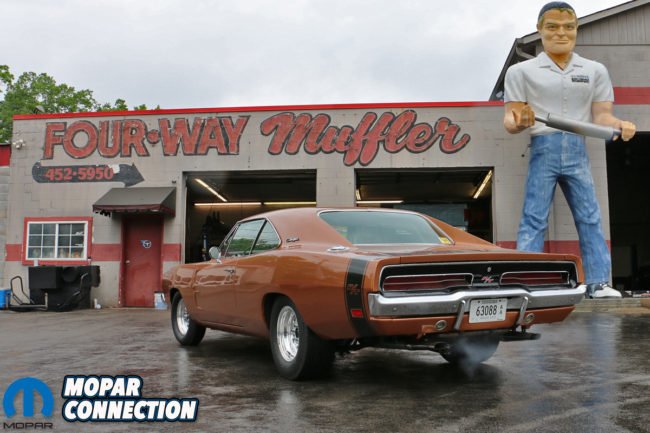
Above: The growling burble of our big stroker wedge has never sounded more intimidating than through a customized set of Hedman Husler Hedders and a complete Flowmaster American Thunder Series system. Best of all, gone is the head rattling drone from our previous exhaust and the restrictive kinks thanks to true 3-inch mandrel bent tubing. Big motors need to evacuate exhaust as freely as they need intake air, don’t restrict your engine’s breathing!




